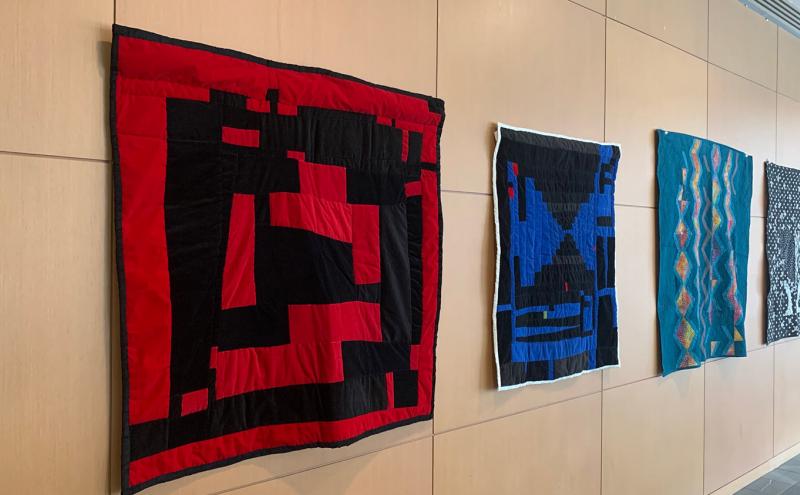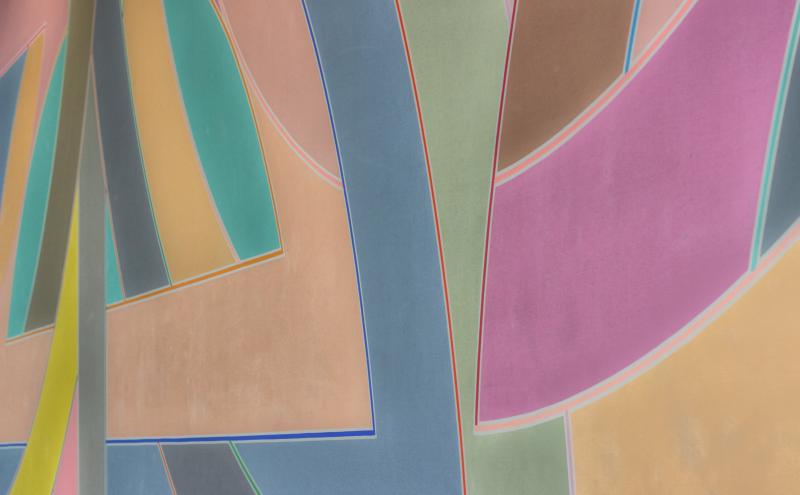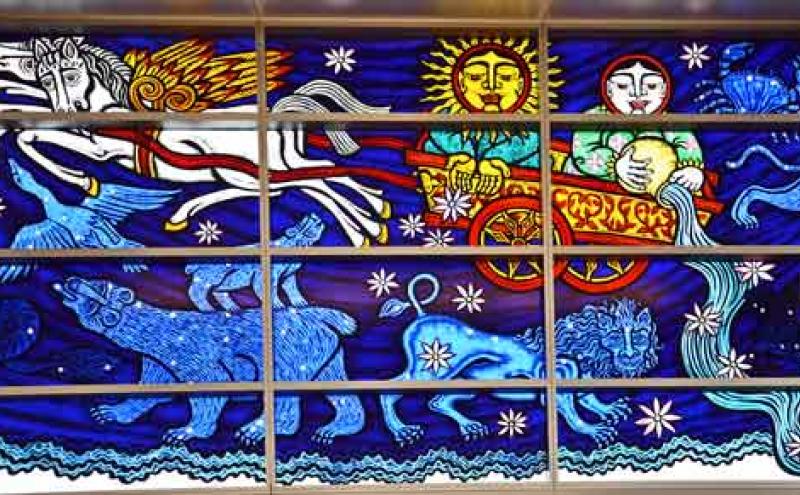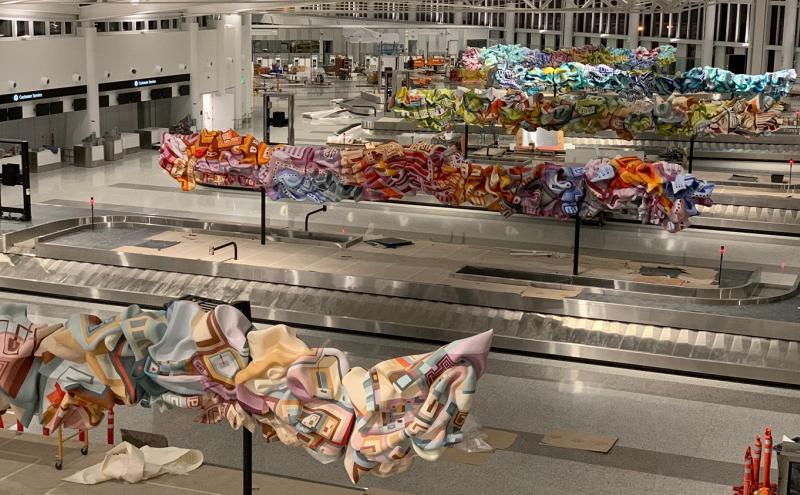
Managing and carrying out a public art installation in an international airport can be complicated in the best of circumstances. Throw a global pandemic into the mix plus the artist not being onsite for the installation, and it starts to feel like a complicated puzzle. Under these challenging circumstances, Port Senior Art Program Manager Tommy Gregory recently managed a successful SEA Airport installation of Chalchiutlicue, a five-piece sculpture by artist Marela Zacarías.
The piece was installed in the 450,000-square-foot Grand Hall of the International Arrivals Facility, currently under construction and set to open later in 2021. Gregory and an eight-person crew from the Port’s in-house construction team, Port Construction Services (PCS), planned the installation and installed the pieces, working overnight for five weeks to complete the project.
Pacific Northwest inspiration
As you enter the Grand Hall and descend the escalators to the baggage claim, you’ll see the five painted pieces by Zacarías, suspended from a steel beam above each of the five baggage carousels. Each piece spans 50 feet in length and six feet in height, and evokes the natural beauty of the Pacific Northwest through colors, shapes, and movement.
The sculptures that make up Chalchiutlicue — created from a mix of fire-retardant wood, wire mesh, joint compound, primer, and paint — were inspired by the colors of the waterways and sunsets in the San Juan Islands.
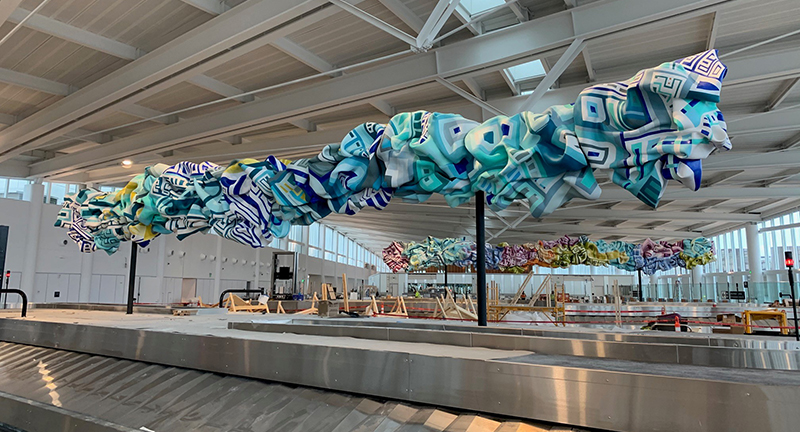
A unique process
The process of installing public art at SEA depends on the needs of the piece and its planned location in the airport. Often, the artist creates the piece for SEA and develops a plan for installation in the airport. But with Chalchiutlicue, the installation was in the hands of Gregory and Port staff.
“(Marela) knew what she wanted to make but due to a few issues, including the pandemic, was not able to see it to fruition in the space,” Gregory said. “She was able to fabricate the piece but not to install.”
Due to complications with COVID-19, it wasn’t possible to get Zacarías onsite, so Gregory hired PCS to work on the installation. With circumstances anything but normal, Gregory managed the process from end to end.
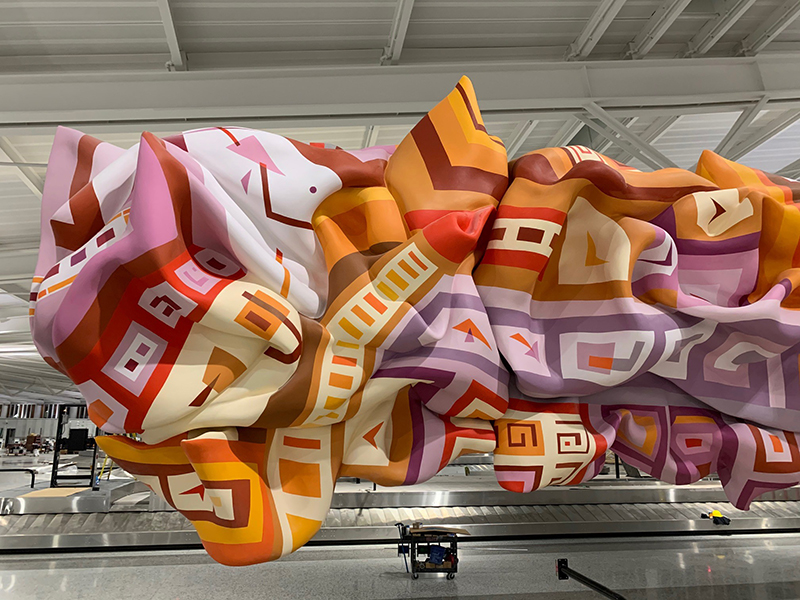
“Normally I would be the cheerleader; I’d show up and say ‘That looks good,’ and go home for the night,” Gregory said. “This time I was working directly with the team overseeing the installation. I was there for every 6:00 a.m. moment in the warehouse when the team was disassembling crates.”
Port Construction Services handles the Port’s public works construction needs at the airport and seaport. Construction managers work with port staff to plan and perform construction work where the traditional design-bid-build process may not be required. With the successful installation of Chalchiutlicue, PCS can now add large-scale art installations to their repertoire.
The location of the Zacarías pieces in the Grand Hall made the installation more challenging. The Grand Hall will eventually be operated by Customs and Border Patrol (CBP), so security protocols were heightened. This space was also an active construction zone operated by Clark Construction, so Gregory and PCS followed both Port and Clark protocols and job standards.
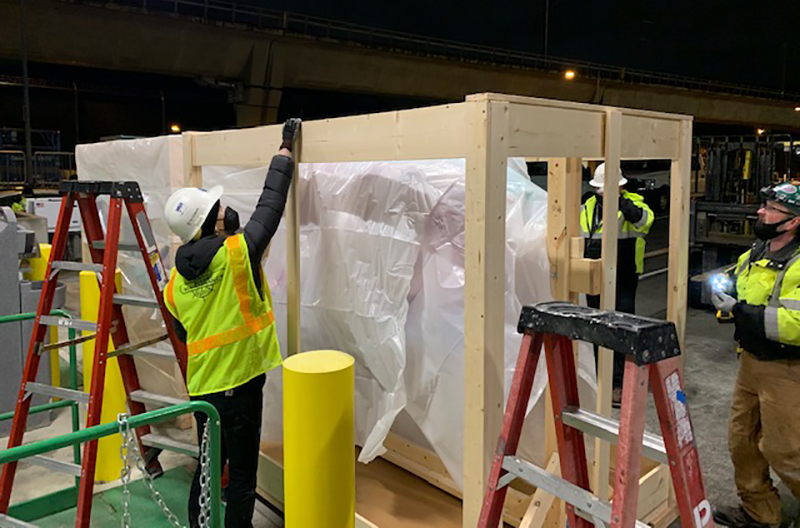
Teamwork
Since the PCS night crew had successfully handled art installations at SEA in the past, Gregory was confident they could handle this complicated installation. Gregory and the crew followed a grueling schedule for the five-week process, preparing for installation during the day and installing at night when IAF construction crews were offsite.
To get started, the team reviewed Zacarías’ installation notes and had to adapt the plan for the parameters of the space. Once they were onsite, the plan went out the window.
“As soon as we got in the building and had the artwork in front of us, we had to problem solve onsite,” Gregory said.
The solutions were tested even before the crates containing the artwork had made it into the Grand Hall. The crates had been built to specifications that allowed the art to be moved into the IAF building at a defined level of completion. By the time the crates arrived at the site, they were too big to fit into the building entrance and needed to be modified, adding two weeks to the installation timeline.
Once the crates made it inside, Gregory and the team got to work. Five sculptures were designed to hang from steel beams over each bag carousel, and the team had to figure out the best way to attach the pieces to the beams without using lifts or cranes. The first section took an entire an entire night to install, but the crew's efficiency increased over time. By the end of the week, the installation of one sculpture was complete, and all five sculptures were installed within nine days.

Gregory praised the installation under COVID-19 and CDC guidelines as an impressive feat.
“I’ve been really impressed with PCS’s ability to problem solve,” Gregory said. “It has been great to work with a team that is so professional, positive, and art savvy.”
Gregory and PCS are also working on the re-installation of the infamous High Wire painting by Michael Fajans that was taken offsite for cleaning and restoration. The magician painting is being reinstalled over security checkpoint 2 in Concourse A.
Up next: California-based artist Ned Khan’s nature-inspired custom metal fabrication Magnetic Anomaly, consisting of spinning suspended metallic mobiles, will be installed in the IAF Grand Hall early in 2021. Khan will hire a museum-quality installation crew, and work with a local Seattle art handling company.



